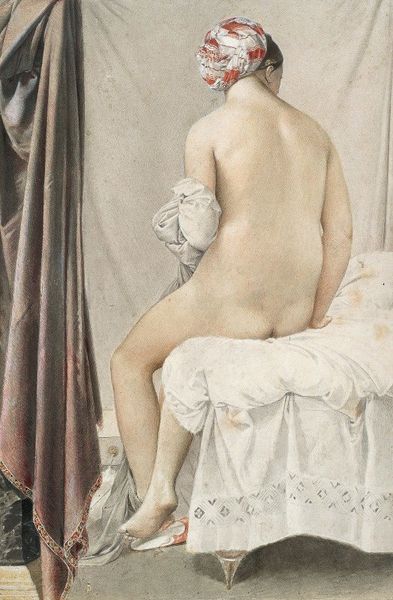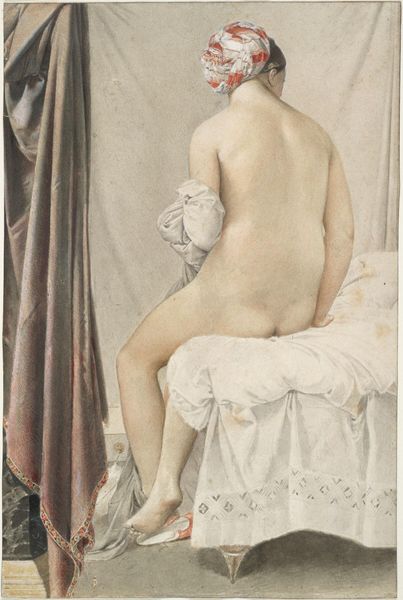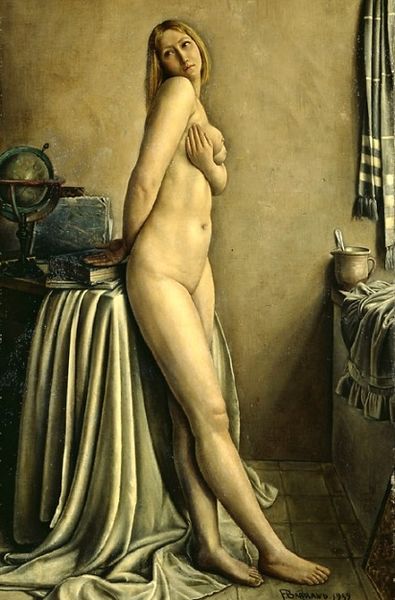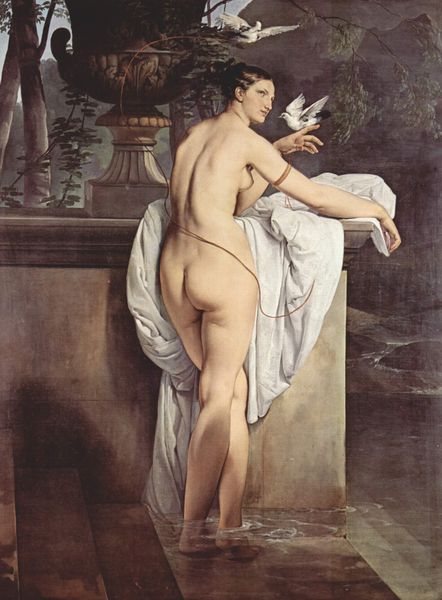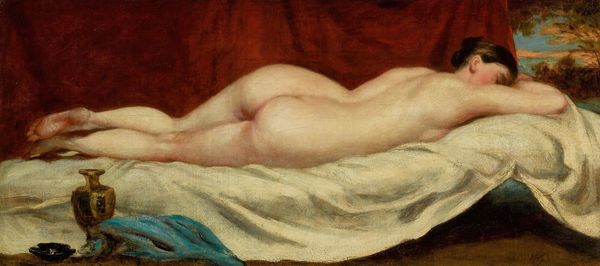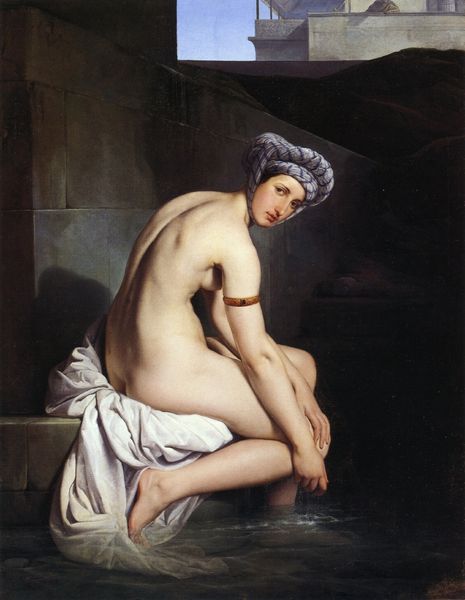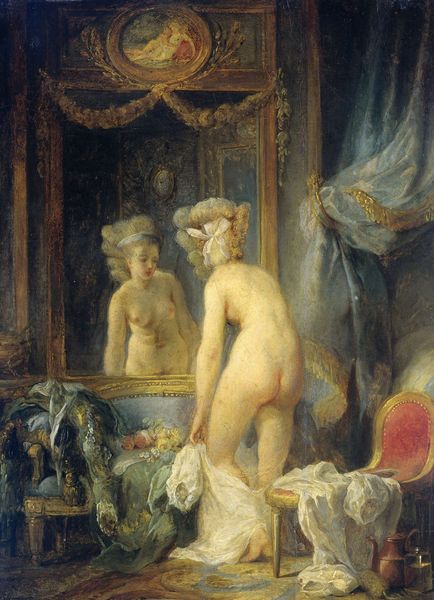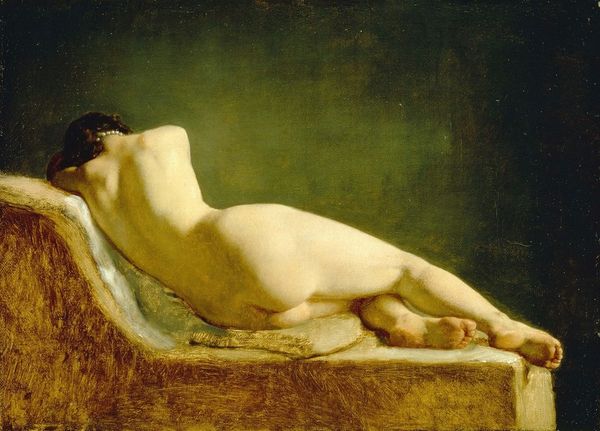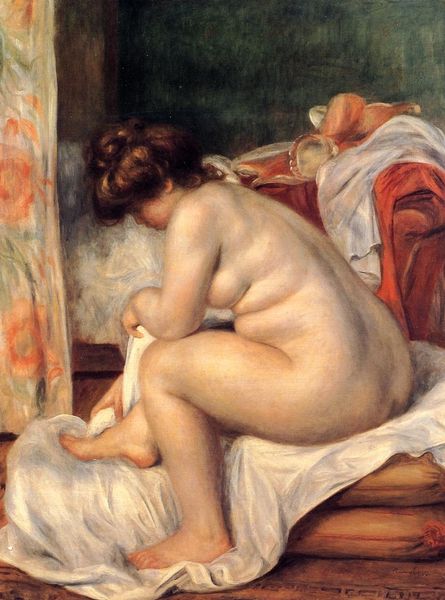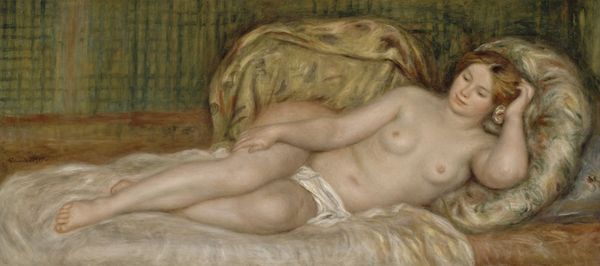
painting, oil-paint
#
portrait
#
painting
#
oil-paint
#
figuration
#
romanticism
#
human
#
history-painting
#
academic-art
#
lady
#
nude
#
sitting
#
female-portraits
Dimensions: 146 x 97.5 cm
Copyright: Public domain
Editor: Here we have Ingres's "The Bather of Valpinçon," painted in 1808 using oil paint. The woman’s back is so smooth, almost sculptural, it's like he’s not just depicting skin but also some idealized version of it. What stands out to you about this piece? Curator: What strikes me immediately is the deliberate emphasis on the texture of the linens juxtaposed against the almost porcelain-like smoothness of the bather’s skin. Consider the social context. This isn't simply a nude; it's an exploration of the materials and processes used to create images of idealized beauty. It speaks volumes about the societal gaze and the labour involved in constructing such representations. Ingres seems less concerned with anatomical correctness, evidenced in the figure’s elongated back, than with conveying tactile and material experiences. How does this strike you? Editor: That’s interesting, I was really stuck on how it looked, the smooth skin but now I see the other surfaces like the drape on the left side, and especially the fabric on her head that looks rougher. What would this painting say about artistic skill at that time? Curator: Exactly. The artist's skill isn't just about accurately rendering the figure but manipulating and contrasting the qualities of oil paint to mimic different materials. Ingres displays this tension between academic painting, its market value determined by technique, and more tactile explorations. Furthermore, who are the consumers of such images and what labor is obscured in their creation and consumption? This work exists within the art market as a crafted object. Does knowing this change how we perceive the scene? Editor: It definitely gives a new perspective on all the choices he made while making the piece. I now have new questions about labor conditions for the artists during the romantic era. Thanks. Curator: Indeed, recognizing how material and market conditions shaped the art piece changes everything.
Comments
No comments
Be the first to comment and join the conversation on the ultimate creative platform.
